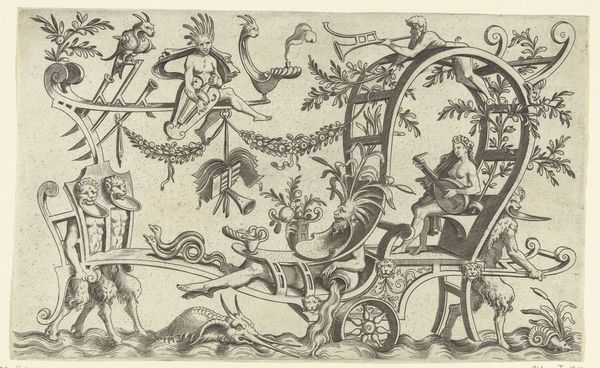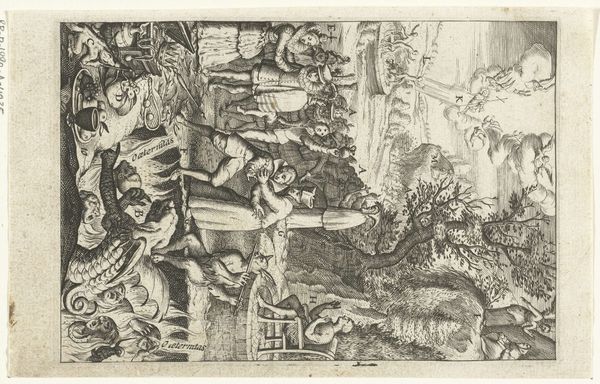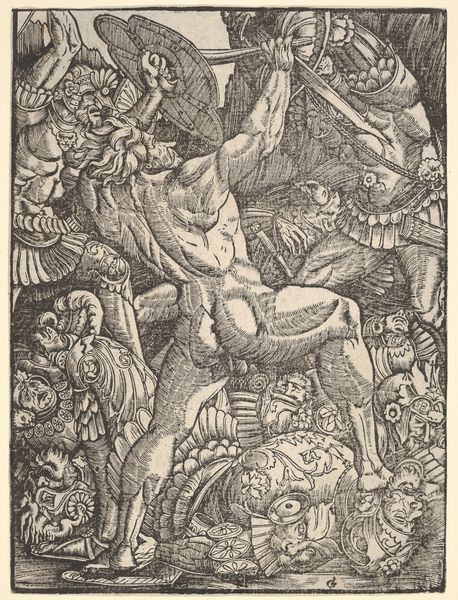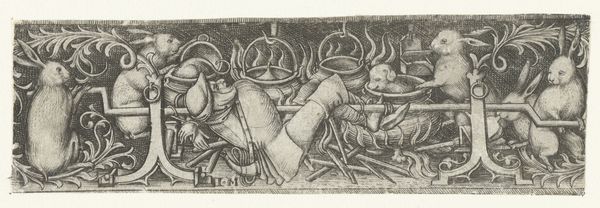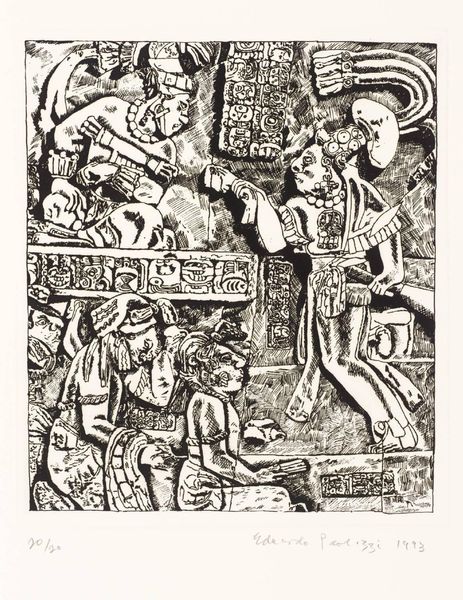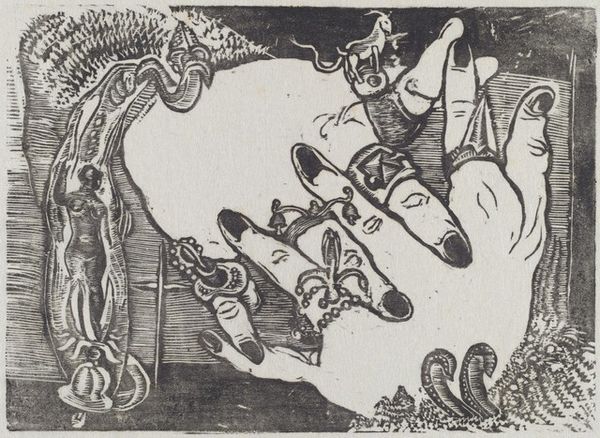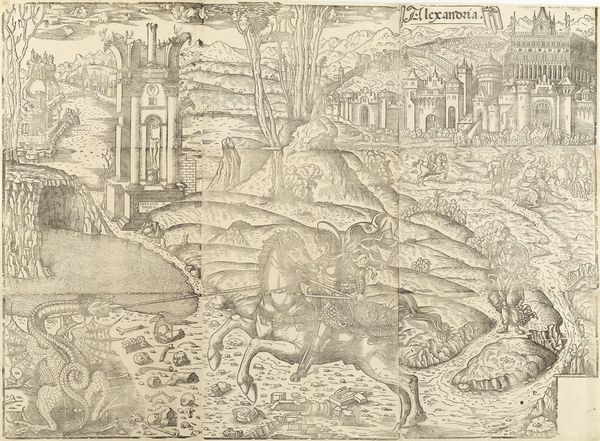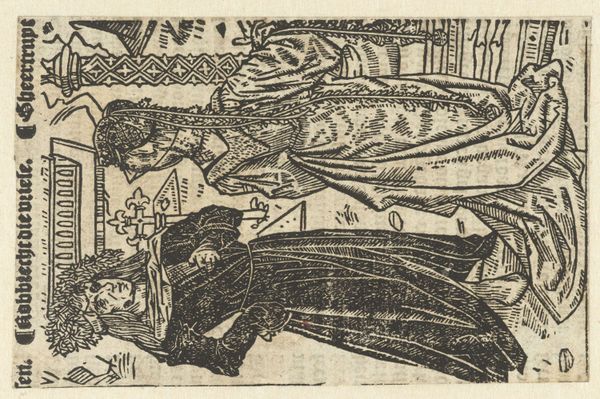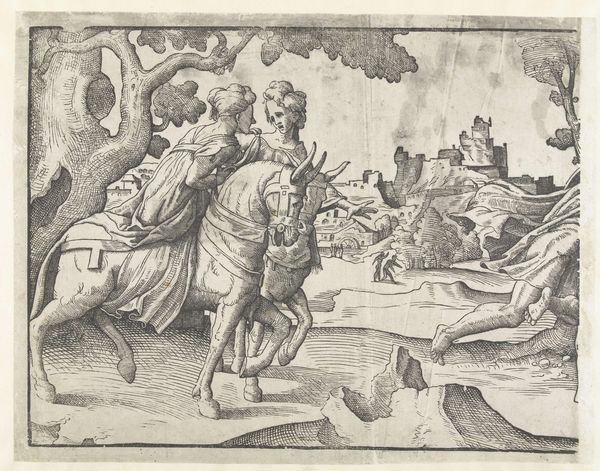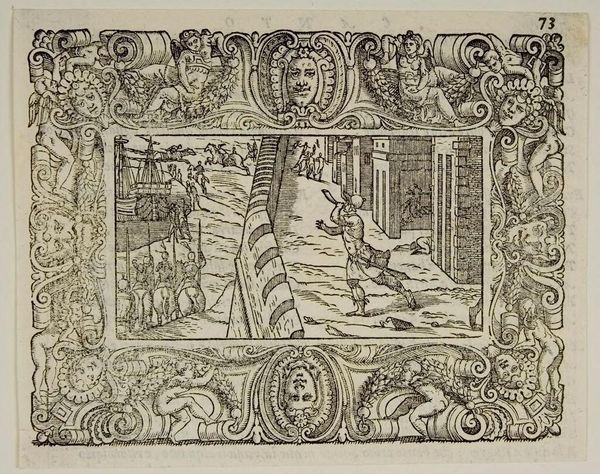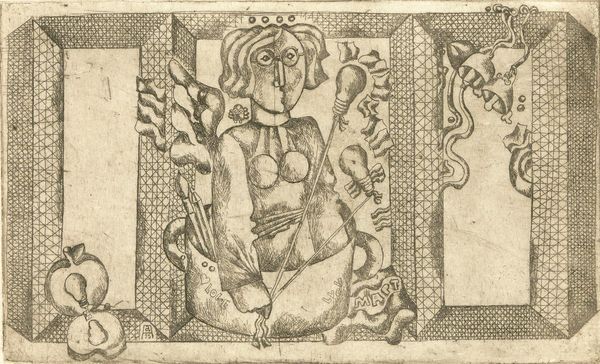
print, intaglio, ink, woodcut, engraving
#
medieval
#
pen drawing
# print
#
pen illustration
#
intaglio
#
old engraving style
#
figuration
#
ink line art
#
ink
#
pen-ink sketch
#
woodcut
#
line
#
pen work
#
engraving
Dimensions: height 90 mm, width 68 mm
Copyright: Rijks Museum: Open Domain
Editor: So, this is “The Incredulous Thomas,” made between 1490 and 1503 by the Master of the Delbecq-Schreiber Passion, an engraving done in ink. I’m really drawn to the stark contrasts in this print; it feels quite dramatic despite its small size. What strikes you about it? Curator: I see a powerful interrogation of faith and doubt, mirrored against a backdrop of social and political upheaval in the late medieval period. Consider the historical context: religious dogma was intensely policed, yet here, doubt is visually centered. What does it mean to depict an Apostle’s questioning so prominently? Editor: That’s fascinating! I hadn’t thought about it in terms of questioning authority. So, you’re saying representing doubt wasn't necessarily just a straightforward religious illustration, but could have been read as a commentary on broader societal anxieties? Curator: Precisely! Think about the power structures inherent in the Church, and how questioning was often seen as an act of rebellion, especially from marginalized voices. Do you notice anything in the composition that highlights Thomas’s agency? Editor: Well, he is physically interacting with Christ, actually touching the wound. It’s a very active pose compared to the others in the scene. Curator: Yes, exactly. This act of physical investigation challenges the passive acceptance demanded by the dominant religious narratives. In what ways might this resonate with contemporary conversations about truth and power? Editor: I guess in our current world, where information is constantly bombarding us, it’s a reminder to critically examine everything we’re told, especially by those in power. Curator: Absolutely. It bridges a gap of centuries, suggesting that the act of questioning is perpetually relevant. Editor: This has really opened my eyes. Seeing this print as more than just a biblical scene, and as a reflection of societal power dynamics and the courage to question is powerful. Curator: And for me, considering your perspective grounds the historical in the present, ensuring that art history remains a living dialogue.
Comments
No comments
Be the first to comment and join the conversation on the ultimate creative platform.
